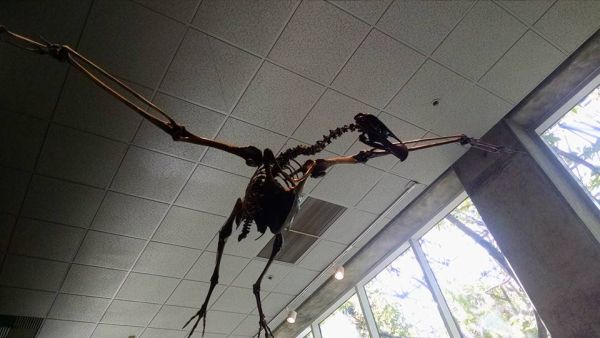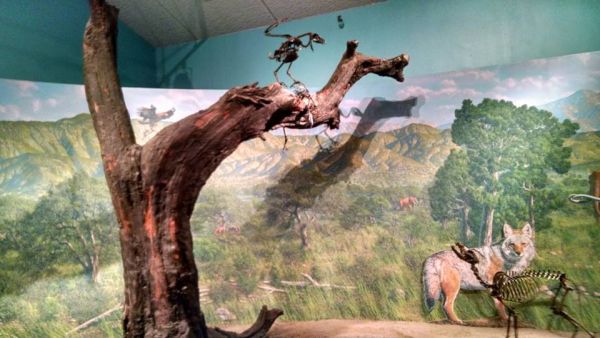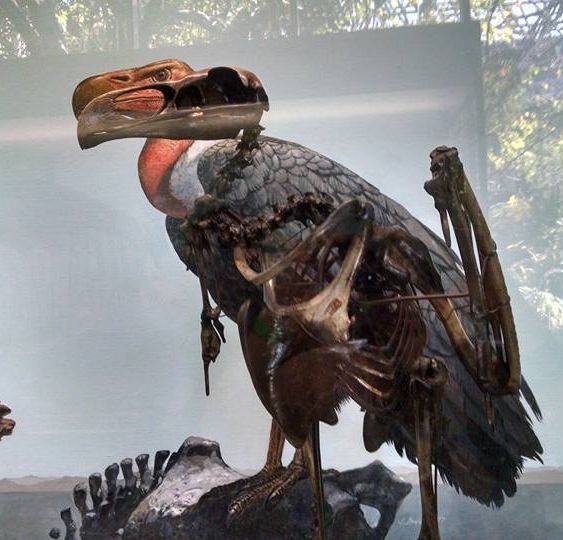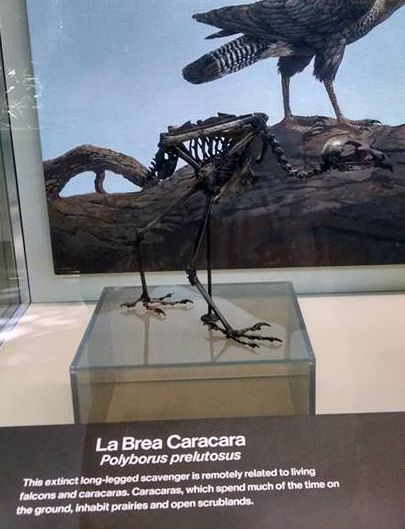
Last weekend, I finally fulfilled a dream that has been hidden in my heart since I was a little girl watching Bugs Bunny cartoons – I visited the La Brea tar pits (yes, this is a fairly redundant phrase. No, I don’t care.)
While the birding in the park around the pits was somewhat limited — an Audubon’s Warbler, a Northern Junco, a Black Phoebe — the birding inside was nothing short of spectacular. Behind glass was evidence of a lost avifauna that was nothing short of spectacular.
As with mammals, the avifauna of the tar pits is heavy on individuals from predatory and scavenging species who were perhaps drawn to the struggles of dying mammoths and ground sloths. Condors, of course. California Condors, La Brea Condors, and the Merriam’s Giant Condor — a magnificent bird even in death. Eagles with appealing names like Fragile Eagle and Errant Eagle, as well as the extant Golden Eagle. The long-gone American Vulture (more closely related to old-world Vultures than anything we have today) and the still-healthy Turkey Vulture.
Water birds would get trapped in these deceptive lakes as well. Many are what we’d expect to see today: Mallards and Canada Geese. A few we will never see again, like the La Brea Stork.
And a few victims are birds that just came down to drink at the wrong place and the wrong time, birds like Passenger Pigeons and California Turkeys, and also birds like Great Horned Owls and American Goldfinch.
The heady mixture of extinct and ordinary was a fine brew to spark reflection, even if it did smell of asphalt. Which species that we take for granted today will seem mysterious by their absence tomorrow? And, as always, birds that sit still forever are birds I can take pictures of.
Golden Eagle and coyote fossils
La Brea Condor
La Brea Caracara














I think I can safely say that La Brea is where I became a naturalist. Aged 4.